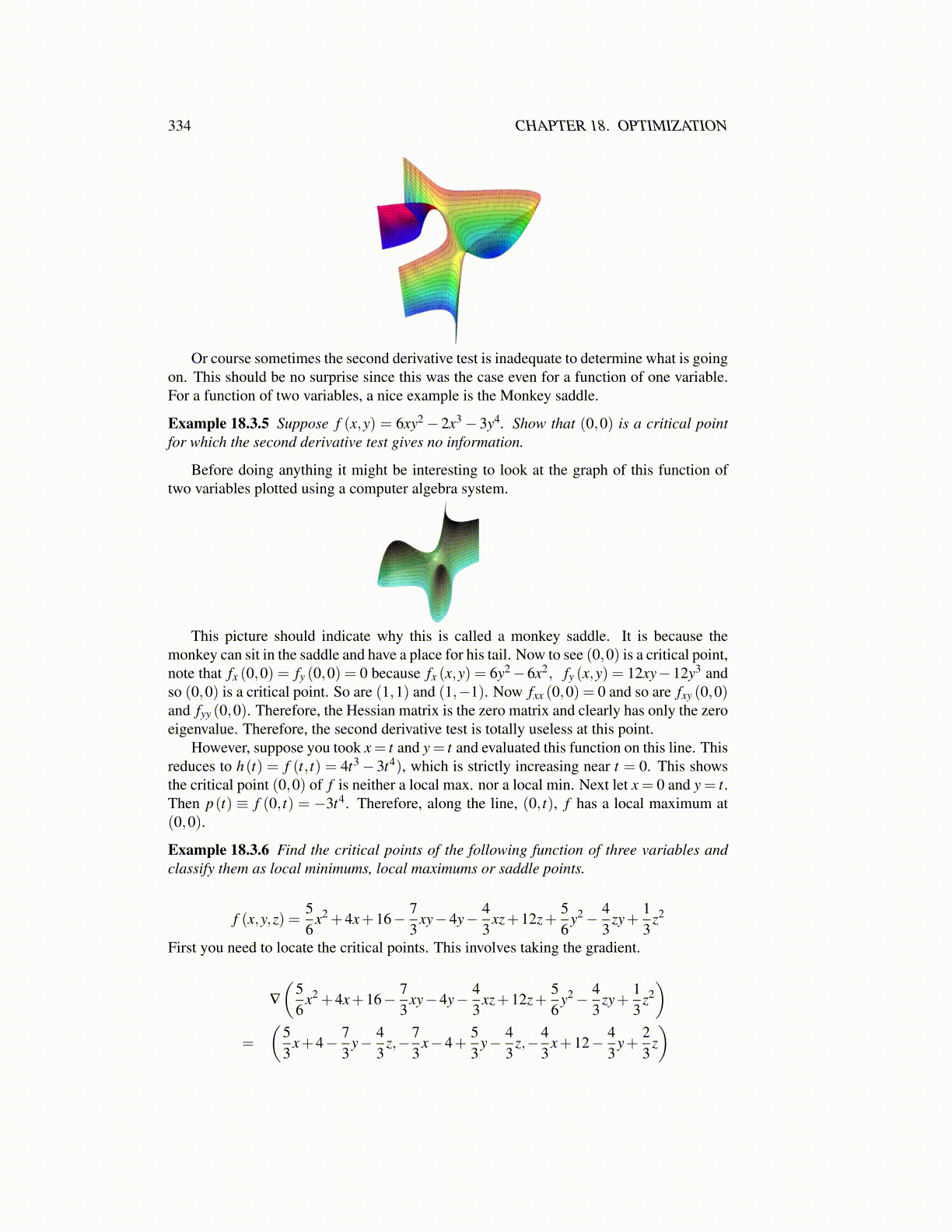
334 CHAPTER 18. OPTIMIZATION
Or course sometimes the second derivative test is inadequate to determine what is goingon. This should be no surprise since this was the case even for a function of one variable.For a function of two variables, a nice example is the Monkey saddle.
Example 18.3.5 Suppose f (x,y) = 6xy2− 2x3− 3y4. Show that (0,0) is a critical pointfor which the second derivative test gives no information.
Before doing anything it might be interesting to look at the graph of this function oftwo variables plotted using a computer algebra system.
This picture should indicate why this is called a monkey saddle. It is because themonkey can sit in the saddle and have a place for his tail. Now to see (0,0) is a critical point,note that fx (0,0) = fy (0,0) = 0 because fx (x,y) = 6y2−6x2, fy (x,y) = 12xy−12y3 andso (0,0) is a critical point. So are (1,1) and (1,−1). Now fxx (0,0) = 0 and so are fxy (0,0)and fyy (0,0). Therefore, the Hessian matrix is the zero matrix and clearly has only the zeroeigenvalue. Therefore, the second derivative test is totally useless at this point.
However, suppose you took x = t and y = t and evaluated this function on this line. Thisreduces to h(t) = f (t, t) = 4t3− 3t4), which is strictly increasing near t = 0. This showsthe critical point (0,0) of f is neither a local max. nor a local min. Next let x = 0 and y = t.Then p(t) ≡ f (0, t) = −3t4. Therefore, along the line, (0, t), f has a local maximum at(0,0).
Example 18.3.6 Find the critical points of the following function of three variables andclassify them as local minimums, local maximums or saddle points.
f (x,y,z) =56
x2 +4x+16− 73
xy−4y− 43
xz+12z+56
y2− 43
zy+13
z2
First you need to locate the critical points. This involves taking the gradient.
∇
(56
x2 +4x+16− 73
xy−4y− 43
xz+12z+56
y2− 43
zy+13
z2)
=
(53
x+4− 73
y− 43
z,−73
x−4+53
y− 43
z,−43
x+12− 43
y+23
z)